#PlasticWasteReduction
Explore tagged Tumblr posts
Text
Global Plastic Recycling Market Poised for Expansion: USD 91.2 Billion by 2033
In a world where environmental sustainability is becoming more urgent, the Plastic Recycling Market has emerged as a vital solution to manage the mounting plastic waste crisis. As plastic consumption continues to rise across industries, recycling technologies and innovations are playing a critical role in reshaping how we view and handle plastic materials. This market is not only essential for…

View On WordPress
#CircularEconomy#EcoFriendlyPackaging#EnvironmentalImpact#GreenInnovation#MarketTrends2025#PlasticRecyclingMarket#PlasticWasteReduction#RecycledPlastic#RecyclingTechnology#SustainabilitySolutions#WasteManagement
0 notes
Text
Eco-Friendly Straws Market Growth: Key Trends and Innovations Shaping Sustainable Consumer Choices in 2025

The Eco-Friendly Straws Market is experiencing significant growth as more consumers and businesses adopt sustainable practices. With increasing concerns over plastic pollution and its environmental impact, the demand for eco-friendly alternatives to traditional plastic straws has surged. Innovations in materials, design, and manufacturing are driving this market forward, while consumer awareness of sustainability continues to shape purchasing decisions. In this blog, we will explore the key trends and innovations influencing the growth of the eco-friendly straws market and how they are shaping sustainable consumer choices in 2025.
1. Rising Demand for Sustainable Alternatives
As the world grapples with the environmental challenges posed by plastic waste, the demand for eco-friendly products, including straws, has grown significantly. Eco-Friendly Straws Market growth is driven by increasing consumer preference for sustainable products, particularly those that help reduce single-use plastic consumption.
Government Regulations and Bans on Plastic Straws
In many regions, governments have introduced regulations and bans on plastic straws in an effort to reduce plastic pollution. Countries such as the European Union and the United States have introduced measures that require businesses to switch to alternatives like paper, bamboo, and metal straws. These regulations are not only pushing businesses to comply but are also influencing consumer preferences as they become more aware of the environmental impact of plastic products.
For businesses, this regulatory shift is a catalyst for growth in the Eco-Friendly Straws Market. Brands are increasingly introducing products that align with sustainability efforts to meet the growing demand for eco-friendly alternatives. For consumers, these regulations drive purchasing decisions, as they seek to support businesses that prioritize environmental responsibility.
Increased Consumer Awareness of Environmental Impact
Consumer awareness of the environmental impact of plastic straws has increased significantly in recent years. Social media campaigns, documentaries, and environmental advocacy groups have played a pivotal role in raising awareness about the dangers of plastic pollution in oceans and wildlife. As a result, consumers are becoming more selective in their purchasing decisions, opting for eco-friendly straws as part of their commitment to sustainability.
This shift in consumer behavior has encouraged companies to innovate and produce straws made from biodegradable or reusable materials, such as paper, stainless steel, glass, and bamboo. The desire for sustainable products is no longer a niche preference but a mainstream movement, influencing the growth trajectory of the Eco-Friendly Straws Market.
2. Innovations in Materials and Design
Innovation in materials and design is a major driving force behind the expansion of the Eco-Friendly Straws Market. Manufacturers are continuously experimenting with new, sustainable materials that provide durability and functionality while minimizing environmental impact. Below are some of the key innovations transforming the market:
Paper Straws: A Popular Choice for Sustainability
Paper straws have emerged as one of the most popular eco-friendly alternatives to plastic. They are biodegradable, compostable, and can be produced from sustainably sourced materials. Innovations in paper straw production have made them more durable, addressing concerns over the straws becoming soggy quickly in liquids.
Paper straws are particularly popular in the foodservice industry, where restaurants, cafes, and fast-food chains are transitioning away from plastic straws in favor of paper options. This innovation has been key in driving the growth of the Eco-Friendly Straws Market, especially as businesses seek to meet consumer demand for sustainable alternatives.
Reusable Straws: Sustainability Meets Convenience
Another major innovation in the eco-friendly straw market is the rise of reusable straws. Materials such as stainless steel, bamboo, and silicone are used to create long-lasting straws that can be cleaned and used multiple times. Reusable straws offer consumers a convenient, sustainable option that reduces waste over time.
The growing popularity of reusable straws is supported by the increasing trend of zero-waste lifestyles, where consumers prioritize minimizing their environmental footprint. Many reusable straws come with convenient carrying cases, making them easy to transport and use on the go. This innovation caters to consumers who are committed to sustainability but also value convenience and practicality.
Bamboo Straws: Natural and Eco-Friendly
Bamboo is another material gaining traction in the Eco-Friendly Straws Market. Bamboo straws are a natural, biodegradable option that is gaining popularity due to their eco-friendly properties. Bamboo is a renewable resource, and its fast growth rate makes it an ideal material for sustainable product development.
These straws offer a unique, natural aesthetic, making them appealing to eco-conscious consumers who value organic materials. Additionally, bamboo straws are strong, reusable, and compostable, which adds to their environmental benefits.
Edible Straws: A New Frontier in Sustainability
Innovations in edible straws are pushing the boundaries of eco-friendly alternatives. Companies are developing straws made from edible materials like rice, seaweed, and tapioca. These straws not only eliminate waste but also offer a unique and fun experience for consumers.
Edible straws are still in the early stages of market adoption but are gaining attention as a potential solution for reducing plastic waste in the food and beverage industry. Their novelty factor and environmental benefits are expected to contribute to their growth in the Eco-Friendly Straws Market in the coming years.
3. The Role of Corporate Responsibility and Consumer Expectations
The growing demand for eco-friendly straws is also influenced by changing consumer expectations regarding corporate responsibility. As sustainability becomes a core value for consumers, businesses are increasingly held accountable for the environmental impact of their products and operations.
Corporate Sustainability Initiatives
Companies are incorporating sustainability into their corporate missions by committing to reducing waste, improving packaging, and using eco-friendly materials in their products. By aligning with consumer values and emphasizing their commitment to sustainability, businesses are not only gaining consumer trust but also benefiting from the expanding Eco-Friendly Straws Market.
Meeting the Demand for Sustainable Products
Consumers now expect brands to offer environmentally responsible products and practices. Businesses that fail to adapt to these expectations risk losing market share to competitors who embrace sustainability. As a result, companies are investing in innovative product development, eco-friendly packaging, and sustainable production processes to meet the growing demand for products like eco-friendly straws.
4. Conclusion: A Sustainable Future for the Eco-Friendly Straws Market
The Eco-Friendly Straws Market is experiencing dynamic growth, driven by consumer demand for sustainable alternatives to plastic. Innovations in materials, design, and production processes are making eco-friendly straws more accessible, practical, and attractive to a wide range of consumers. As governments implement regulations and consumer awareness increases, the market is expected to continue its upward trajectory in 2025 and beyond.
The ongoing evolution of eco-friendly straws reflects broader trends in sustainability, with businesses and consumers alike becoming more conscious of their environmental impact. As we move toward a greener future, eco-friendly straws will continue to play a vital role in reducing plastic waste and promoting sustainable consumer choices.
#EcoFriendlyStrawsMarket#SustainableAlternatives#EcoFriendlyProducts#PaperStraws#ReusableStraws#BambooStraws#PlasticWasteReduction#EnvironmentalSustainability#ZeroWasteLifestyle#EdibleStraws#EcoInnovation#SustainableChoices#CorporateResponsibility#EcoFriendlyLiving#SustainabilityTrends#GreenMarket
0 notes
Text
Air Fountain System

The Air Fountain System is a comprehensive guide that teaches how to harvest moisture from the air and turn it into clean drinking water.
It offers clear, step-by-step instructions to build two types of water generators : a compact model for small spaces and a larger system for greater water needs. Both designs are budget-friendly, require no prior technical skills, and can be completed in just one day using detailed diagrams and material lists.
Additionally, the program provides an optional guide for creating a mini power generator to run the water system on renewable energy, though it is highly efficient with standard electricity at minimal cost.
This resourceful solution empowers anyone seeking a reliable, sustainable water supply to create a
What is The Air Fountain System?
The Air Fountain System is a unique water generator that extracts moisture from the air and turns it into clean water for everyday use. It's designed to be simple and easy to use, operating on a principle similar to a dehumidifier, but instead of just reducing humidity, it creates water. Once set up, users can enjoy a reliable water supply without needing traditional sources like wells or city water lines. The system can be powered by standard electricity or off-grid options, such as a battery, making it flexible for different living situations. This makes it an ideal solution for people living in areas with limited access to fresh water or for those who want to reduce their dependence on traditional water sources. The Air Fountain System is not only efficient but also environmentally friendly, as it uses renewable resources to produce clean water. It’s perfect for emergency preparedness, camping, or anyone who wants a sustainable way to provide water for their home. Plus, it’s easy to maintain and cost-effective, making it an excellent choice for families looking to secure their water supply while cutting down on utility bills.
How Does The Air Fountain System Work?
The Air Fountain System is a groundbreaking technology that extracts water from the air by using the natural process of condensation. Unlike a dehumidifier, which simply removes moisture for comfort, the Air Fountain turns that moisture into clean, drinkable water.
The system works by pulling in moist air from the environment through a built-in fan or intake system. This air is then cooled to reach its dew point—the temperature at which moisture condenses. Once cooled, the moisture in the air condenses into droplets on a coil or condenser surface, where it is collected and directed into a water storage tank.
To ensure the water is safe for consumption, the system includes a multi-stage filtration process, such as carbon filters or UV sterilization, to remove contaminants like bacteria and viruses. The purified water is then stored in a reservoir, with some models, like the Air Fountain, continuously replenishing the water in real-time for a fresh supply whenever needed.
One of the standout features of the Air Fountain is its off-grid capability, as many systems are powered by solar energy, making them ideal for remote areas or during emergencies.
Solar panels harness the sun’s energy to run the system without relying on a traditional electrical grid, ensuring access to clean water even in power-limited areas.
In addition to being off-grid, the Air Fountain is highly energy-efficient, producing significant amounts of water while using minimal power. This makes it a perfect solution for survivalists, preppers, or anyone seeking eco-friendly, sustainable ways to address water scarcity.
Ultimately, the Air Fountain System offers a self-sustaining method to produce clean water from air moisture, combining condensation, filtration, and renewable energy.
It provides a reliable, cost-effective solution to water shortages, especially in regions affected by droughts, natural disasters, or off-grid living conditions.
By using this system, individuals and families can become more self-sufficient and prepared for an uncertain future while also contributing to a more sustainable lifestyle.
Science Behind The Air Fountain System
The Air Fountain System is a remarkable innovation that utilizes atmospheric water generation (AWG) to convert airborne moisture into drinkable water.
This technology integrates advanced condensation methods, multi-stage filtration, and energy-efficient design, ensuring a sustainable and reliable water source even in challenging conditions. By mimicking natural processes and enhancing them with modern engineering, the system represents a groundbreaking approach to addressing water scarcity.
The condensation process lies at the heart of the Air Fountain System’s functionality. Using a cooling coil, the system lowers the air temperature beneath its dew point, prompting moisture in the air to condense into liquid droplets.
This mechanism parallels the natural water cycle, where water vapor cools and transforms into precipitation. However, the Air Fountain System refines this process to produce clean water efficiently, ensuring its suitability for human consumption.
Humidity levels play a significant role in the system's performance. Atmospheric humidity, the measure of water vapor in the air, determines how readily the system can extract moisture. As air cools to its dew point, vapor condenses into liquid form.
Even in semi-arid or arid climates where humidity is low, the system can function effectively, though it may require additional energy or time in such environments.
Once water is harvested through condensation, it undergoes a rigorous purification process. The system employs a multi-stage filtration mechanism to eliminate contaminants, including dust, pollutants, and microorganisms.
Pre-filters remove larger particles, carbon filters address odors and chemicals, and UV light or ion exchange neutralizes harmful bacteria and viruses. This thorough purification ensures that the collected water is safe for drinking and cooking.
Energy efficiency is a key feature of the Air Fountain System, often leveraging renewable energy sources such as solar power. This capability makes it particularly valuable in off-grid locations or during power outages.
The system incorporates low-energy compressors and advanced heat exchangers to optimize energy consumption while maximizing water production. Some models even integrate solar thermal energy to enhance the condensation process, further boosting efficiency.
The practical applications of the Air Fountain System are vast. It proves invaluable in desert regions, drought-stricken areas, and remote locations lacking access to clean water.
Additionally, its ability to operate off-grid makes it an ideal solution for emergency preparedness and disaster relief scenarios. By providing an independent and sustainable water source, the system addresses critical challenges in water accessibility.
The scientific principles underlying the Air Fountain System have been validated through decades of research in atmospheric water generation. This technology has demonstrated its potential to improve access to potable water, particularly in regions where traditional sources are scarce or unreliable.
By integrating renewable energy and advanced purification techniques, the system not only supports environmental sustainability but also offers a forward-thinking solution to the global water crisis.
By harnessing natural condensation processes and combining them with state-of-the-art purification and energy-saving technologies, the Air Fountain System emerges as a transformative innovation.
It provides a dependable, eco-friendly answer to one of the most urgent challenges of our time—ensuring access to clean, safe water for communities around the world.
To Read More Visit Here
#AirFountainSystem#AirFountainSystemreview#SustainableLiving#EcoFriendly#CleanWater#WaterConservation#DroughtSolutions#OffGridLiving#EmergencyPreparedness#OutdoorAdventures#PortableWater#HealthierFamilies#ContaminantFree#RenewableEnergy#PlasticWasteReduction#WaterScarcity#InnovativeSolutions#GreenLifestyle#CommunityWater#ScalableDesign#WaterIndependence
0 notes
Text
Growing Demand for PVA Films in Healthcare, Packaging, and Agrochemicals

The polyvinyl alcohol (PVA) films market is on a transformative journey, catering to industries such as healthcare, food packaging, electronics, and agrochemicals. These films stand out for their water solubility, biodegradability, and excellent barrier properties, meeting modern industry demands for efficiency and sustainability.
Market Growth
Polyvinyl Alcohol Films Market is expected to grow at a CAGR of 6.1% during the forecast period, from an estimated USD 429 million in 2023 to USD 577 million by 2028. Polyvinyl alcohol (PVA) films are experiencing a rising demand driven by several compelling factors.
In healthcare, PVA films enhance safety by enabling single-dose packaging for pharmaceuticals and encapsulating active ingredients. Their growing adoption in polarizing plates is driven by demand for high-performance LCDs and other displays. Meanwhile, the agrochemical sector benefits from PVA’s water-soluble films that reduce human exposure to chemicals.
The medical and healthcare sector is emerging as the fastest-growing segment in the polyvinyl alcohol (PVA) films market due to its unique capabilities. PVA films, known for their biocompatibility and water solubility, are ideal for applications such as surgical drapes, drug delivery systems, and wound care products. Their dissolvable nature simplifies procedures, minimizing patient discomfort and infection risks. Additionally, they are increasingly used in pharmaceutical packaging, offering effective barriers against moisture and oxygen to prolong medication shelf life. With advancements in healthcare and a focus on patient safety, this segment is poised for remarkable growth, revolutionizing medical applications.
Food packaging also sees innovation through PVA films, offering eco-friendly wrapping solutions with impressive moisture and gas barriers, extending product shelf life. Sustainability efforts are further advanced by a push for bio-based PVA films and regulations promoting green alternatives.
While challenges like high production costs persist, collaboration, regional market expansion, and innovative solutions present vast growth opportunities. As industries pivot towards sustainable practices, PVA films are set to redefine packaging and material solutions for a greener future.
Emerging Trends in the Polyvinyl Alcohol (PVA) Films Market
Biodegradability Focus: Increasing demand for eco-friendly packaging solutions due to growing environmental awareness.
Technological Advancements: Innovations in bio-based PVA films and enhanced production processes.
Regulatory Push: Governments promoting sustainable alternatives to traditional plastics.
Healthcare Expansion: Growing adoption for single-dose pharmaceutical packaging and medical applications.
Rising Use in Electronics: PVA films are essential for polarizing plates in LCDs and other display technologies.
Asia-Pacific Dominance: Rapid industrial growth and stringent environmental regulations driving demand in the region.
To Know more Download PDF Brochure:
Asia Pacific is set to lead growth in the Polyvinyl Alcohol (PVA) Films Market, driven by rising demand for sustainable packaging solutions among its expanding middle class. The region benefits from a robust industrial base in countries like China and India, alongside heightened awareness of environmental issues and PVA's role in reducing plastic waste. Stringent regulations and eco-conscious consumer preferences further bolster market expansion, positioning Asia Pacific as a key player in the adoption of PVA films across industries.
#PolyvinylAlcohol#PVAFilms#SustainablePackaging#EcoFriendlySolutions#PlasticWasteReduction#MedicalApplications#FoodPackaging#AgrochemicalPackaging#InnovativeMaterials
0 notes
Text

The EPR Certificate For Plastic Waste is a vital certification for businesses committed to sustainability. By obtaining this certificate, you ensure compliance with regulatory requirements while contributing to reducing plastic waste. Apply for your EPR Certificate For Plastic Waste today and showcase your commitment to a greener future.
0 notes
Text
#Infineon Technologies#SECORAPayGreen#Sustainability#EcoFriendly#Innovation#PlasticWasteReduction#electronicsnews#technologynews
0 notes
Text

#ConsumerPreferences#PPMeshBags#EcoFriendly#Sustainability#PackagingSolutions#EnvironmentallyConscious#PlasticWasteReduction#BusinessStrategy#MarketTrends#ConsumerBehavior#formosasynthetics
0 notes
Photo
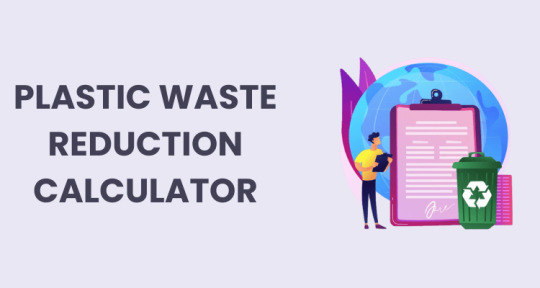
Plastic Waste Reduction Calculator - Minimize Your Plastic Usage
**Dive into Sustainability with Our Plastic Waste Reduction Calculator!**
Ready to make a splash in reducing plastic waste? Our Plastic Waste Reduction Calculator is your ally in quantifying the positive impact of your choices. Let's navigate through the steps to use it:
**How to Use the Calculator:**
**Step 1: Input Usage Details:**
- Begin by entering the number of plastic bags, plastic bottles, and plastic straws you typically use per week into the designated input fields. This data helps assess your potential plastic waste reduction.
**Step 2: Calculate Reduction:**
- Click the "Calculate" button to initiate the process. The calculator applies predefined reduction rates to each type of plastic item based on their environmental impact.
**Step 3: Take Action:**
- The calculator provides an estimate of plastic waste reduction in kilograms. Armed with this information, make informed decisions to cut down on plastic usage in your daily life.
**Real-Time Example:**
Imagine using 10 plastic bags, 5 plastic bottles, and 3 plastic straws per week. After using the Plastic Waste Reduction Calculator, you discover a potential reduction of 2 kilograms per week. That's over 100 kilograms of plastic waste reduction in a year, making a substantial positive impact on the environment.
**Make Waves for a Cleaner Planet with Our Plastic Waste Reduction Calculator.** It's enlightening, actionable, and just a click away!
#PlasticWasteReduction#EcoFriendlyLiving#CalculatorCentral#EnvironmentalImpact#SustainableLiving#PlasticFree#ReduceReuseRecycle#GreenCalculations#EcoConscious#WasteReduction
1 note
·
View note
Link
In today's world, responsible resource management is no longer a luxury, it's a necessity. Accor, a global leader in the hospitality industry, recognizes this and is at the forefront of implementing comprehensive water stewardship initiatives. Their commitment extends beyond simply reducing their environmental footprint; they actively work to foster a culture of water conservation throughout the industry. A Multi-Pronged Approach: Addressing Water Quantity and Quality Accor's water stewardship strategy focuses on three key areas: Water Quantity Reduction: Accor prioritizes minimizing water consumption through a combination of efficiency and sufficiency measures. Their "Water Plan" helps optimize water usage across all operations and encourages the exploration of sustainable solutions. Accor Leads the Charge Case Study: Mövenpick Petra's Water Reduction Success: A prime example of Accor's Water Plan in action is the Mövenpick Petra Hotel in Jordan. By converting 90% of their rooms from bathtubs to walk-in showers, they achieved a 15% reduction in room water consumption by 2025. This translates to a significant water savings of 18,000 cubic meters (m3) annually. Water Quality Improvement: Accor recognizes the importance of water quality and actively seeks to minimize pollution. They achieve this by: Eliminating Chemical-Based Products: Accor prioritizes eco-friendly cleaning solutions and practices that minimize environmental impact. Combating Microplastic Pollution: Accor actively seeks solutions to combat the growing issue of microplastic pollution in waterways. Responsible Food & Beverage Practices: Minimizing Water Footprint The food and beverage industry has a significant water footprint. Accor acknowledges this and implements several strategies within its food and beverage operations to reduce water consumption: Food Waste Reduction: Understanding that food waste is a major contributor to water usage, Accor prioritizes minimizing food waste across its properties. They achieve this through various initiatives, including: Implementing strategies to optimize food purchasing and preparation. Composting food scraps whenever possible. Raising awareness and encouraging guests to adopt mindful practices regarding food consumption. Sustainable Sourcing: Accor works with suppliers who prioritize sustainable water practices in their operations. Alternative Dining Options: Accor offers guests alternative dining experiences that require less water usage compared to traditional methods. This may include promoting in-room dining options or encouraging guests to explore local restaurants that utilize sustainable practices. Eliminating Single-Use Plastics: Accor has partnered with BE WTR, a sustainable water brand, to eliminate single-use plastic water bottles from their properties by 2025. This initiative will offer guests refillable glass bottles, reducing plastic waste and water consumption associated with plastic bottle production. Empowering Guests: Building a Collaborative Approach Accor recognizes that a successful water stewardship strategy requires more than just internal efforts. They actively engage guests in their water conservation efforts through initiatives like: Skip the Clean Project: This program encourages guests to forgo daily room cleaning, opting instead for service every few days. Incentive points are offered to guests who participate, promoting water and energy conservation. Studies indicate that by simply skipping one day of cleaning per stay, significant water savings can be achieved. Beyond Operations: Industry Collaboration for Collective Impact Accor's commitment to water stewardship extends beyond its hotels. They actively participate in international coalitions that foster collaboration and the development of shared solutions for environmental challenges. Some noteworthy highlights include: Sustainable Hospitality Alliance (SHA) Membership: As a member of the SHA, Accor works alongside other industry leaders to promote sustainable practices across the hospitality sector. Hospitality Alliance for Responsible Procurement (HARP): Accor is a founding member of HARP, an initiative that promotes responsible sourcing practices within the hospitality industry, including water-conscious solutions. CEO Water Mandate: Recently, Accor announced their commitment to the CEO Water Mandate, a United Nations initiative that unites over 250 companies dedicated to responsible water stewardship practices. This signifies Accor's commitment to ongoing progress in six core areas: Direct Operations: Minimizing water usage within their hotels. Supply Chain & Watershed: Collaborating with suppliers and local communities to address water challenges. Collective Action: Working with other organizations to drive industry-wide change. Public Policy: Advocating for water-conscious policies. Community Engagement: Educating and collaborating with communities on water conservation.
#Accor#AccorLeadstheCharge#collaboration#conservation#environmentalimpact#guestengagement#plasticwastereduction.#sustainabilityinitiatives#sustainablehospitality#Sustainablepractices#waterstewardship
0 notes
Text
Recyclable 3D Printing Filament: The Green Future of Printing—Market Growing from $1.2B to $3.8B by 2034
Recyclable 3D printing filament market is projected to grow from $1.2 billion in 2024 to $3.8 billion by 2034, achieving a robust CAGR of 11.6%. This market is centered on eco-friendly filaments crafted from recycled materials, addressing the demand for sustainable manufacturing. These filaments, including PLA and PETG, are derived from post-consumer and post-industrial waste, enabling reduced environmental impact while supporting industries like prototyping, consumer goods, and education.
To Request Sample Report: https://www.globalinsightservices.com/request-sample/?id=GIS11069 &utm_source=SnehaPatil&utm_medium=Article
The growth of this market is fueled by increasing environmental awareness and advancements in 3D printing technologies. PLA (Polylactic Acid) leads the segment, thanks to its biodegradability and user-friendly nature, appealing to both professionals and hobbyists. PETG (Polyethylene Terephthalate Glycol) follows closely due to its strength, durability, and recyclability.
Regionally, North America dominates the market, driven by its innovative ecosystem and adoption of sustainable practices. Europe is a strong contender, with nations like Germany and the Netherlands emphasizing circular economy initiatives. Meanwhile, the Asia-Pacific region is witnessing rapid growth, led by industrialization and investments in sustainable technologies in countries such as China and Japan.
In 2023, the market volume reached 250 million metric tons and is forecasted to double by 2033. The PLA segment held a commanding 45% share, followed by PETG at 30% and ABS at 25%. Companies like Filamentive, 3D Printlife, and ColorFabb are at the forefront, driving innovation and enhancing the recyclability of filament products.
Although challenges such as high production costs and limited consumer awareness persist, the market holds immense promise. Stringent EU regulations on plastic waste management and increasing R&D investments are paving the way for advancements. With AI-driven design optimization and sustainable manufacturing practices, the future of recyclable 3D printing filaments looks brighter than ever.
#3DPrinting #SustainableManufacturing #RecyclableFilament #EcoFriendlySolutions #PLA3DPrinting #PETGMaterials #CircularEconomy #AdditiveManufacturing #GreenTechnology #3DPrintingInnovation #PrototypingSolutions #BiodegradableMaterials #3DPrintingSustainability #EcoInnovation #RecycledFilaments #Industrial3DPrinting #FutureOf3DPrinting #SustainabilityGoals #3DPrintingForGood #PlasticWasteReduction #AdvancedMaterials #TechForSustainability #RethinkPlastics #AIIn3DPrinting #GreenManufacturing
0 notes
Text
The Rotterdam100 journey
It's already a while ago, but this spring I was a participant of the Rotterdam100. A case competition for talented students and young professionals from different disciplines, working with big companies to solve challenges for the next economy.
Friday, April 6th
After a selection procedure in February, I was nominated as a candidate for the MatchMaking day together with 250 other talented individuals. During this event, I was introduced to the participating companies and I had to pitch for the consumer-goods company Unilever to become one of the 100 participants. At the end of the day, I have made it to the Unilever team which enabled me to visit Unilever's office ‘De Brug’ and ABN AMRO’s new pavilion CIRCL at the Zuid-as. This circular building is besides being incredibly beautiful, also a source of innovative solutions which fitted the Rotterdam100 spirit. Another plus is that they serve incredible food with seasonal and locally-sourced ingredients;)
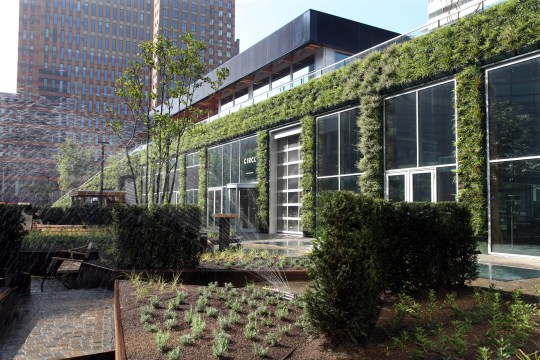
Foto by CIRCL
Thursday, May 24th 15:00 - Friday, May 25th 21:00 (including 3 hours of sleep)
The 24hour Creation Day (which was definitely longer than the 24 hours) was held in the Rotterdam Science centre. This final day was full of workshops, brainstorm sessions and no sleep. The case we worked on for Unilever was focussed on plastic waste reduction. Unilever is becoming more and more sustainable over the years, but there is still an enormous amount of plastic waste to be found in the ocean. Together with Denis Banuoku, Duco Kuiper and Jennifer van Dulfen, we wanted to empower communities to create shared value through innovative and sustainable farming solutions. This resulted in a product called Reclickables, a modular system of clickable units made out of used plastic bottles, to grow your own plants.



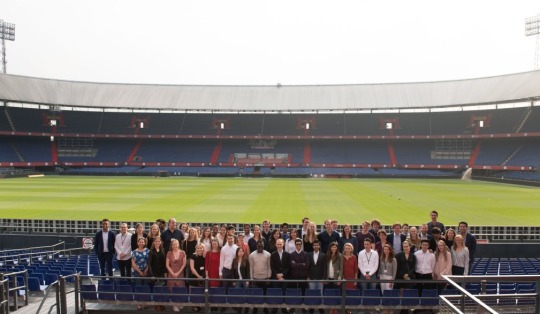
Foto’s by SMO
Rotterdam100 was an amazing experience and I can recommend it to people who want to connect with inspirational individuals and companies to solve worldwide problems.
0 notes
Text
How to Store and Reuse Milk Pockets at Home
Many households today receive their daily dairy in convenient milk pockets, but most people discard them after a single use. However, these durable pouches can actually be repurposed in simple ways. After a thorough rinse, milk pockets can be reused for storing kitchen waste, marinating food, or even freezing small portions of liquids. By incorporating such reuse habits at home, we not only reduce our plastic footprint but also get more value out of the packaging. It’s a small step, but one that adds up to a greener routine.
#MilkPockets#SustainableLiving#ReuseMilkPouches#EcoFriendlyTips#PlasticWasteReduction#GreenKitchenHabits#SustainablePackaging#UpcycleIdeas#DailyDairyWaste
0 notes
Text
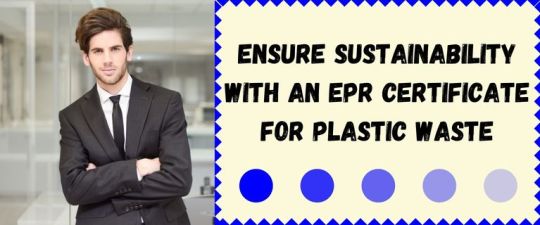
An EPR Certificate For Plastic Waste helps businesses demonstrate their commitment to responsible waste management. It’s a simple process that protects the environment while keeping your operations in line with regulations. Take action now and secure your EPR Certificate For Plastic Waste to maintain compliance and enhance your brand.
0 notes
Text
Growing Demand for PVA Films in Healthcare, Packaging, and Agrochemicals

The polyvinyl alcohol (PVA) films market is on a transformative journey, catering to industries such as healthcare, food packaging, electronics, and agrochemicals. These films stand out for their water solubility, biodegradability, and excellent barrier properties, meeting modern industry demands for efficiency and sustainability.
Market Growth
Polyvinyl Alcohol Films Market is expected to grow at a CAGR of 6.1% during the forecast period, from an estimated USD 429 million in 2023 to USD 577 million by 2028. Polyvinyl alcohol (PVA) films are experiencing a rising demand driven by several compelling factors.
In healthcare, PVA films enhance safety by enabling single-dose packaging for pharmaceuticals and encapsulating active ingredients. Their growing adoption in polarizing plates is driven by demand for high-performance LCDs and other displays. Meanwhile, the agrochemical sector benefits from PVA’s water-soluble films that reduce human exposure to chemicals.
The medical and healthcare sector is emerging as the fastest-growing segment in the polyvinyl alcohol (PVA) films market due to its unique capabilities. PVA films, known for their biocompatibility and water solubility, are ideal for applications such as surgical drapes, drug delivery systems, and wound care products. Their dissolvable nature simplifies procedures, minimizing patient discomfort and infection risks. Additionally, they are increasingly used in pharmaceutical packaging, offering effective barriers against moisture and oxygen to prolong medication shelf life. With advancements in healthcare and a focus on patient safety, this segment is poised for remarkable growth, revolutionizing medical applications.
Food packaging also sees innovation through PVA films, offering eco-friendly wrapping solutions with impressive moisture and gas barriers, extending product shelf life. Sustainability efforts are further advanced by a push for bio-based PVA films and regulations promoting green alternatives.
While challenges like high production costs persist, collaboration, regional market expansion, and innovative solutions present vast growth opportunities. As industries pivot towards sustainable practices, PVA films are set to redefine packaging and material solutions for a greener future.
Emerging Trends in the Polyvinyl Alcohol (PVA) Films Market
Biodegradability Focus: Increasing demand for eco-friendly packaging solutions due to growing environmental awareness.
Technological Advancements: Innovations in bio-based PVA films and enhanced production processes.
Regulatory Push: Governments promoting sustainable alternatives to traditional plastics.
Healthcare Expansion: Growing adoption for single-dose pharmaceutical packaging and medical applications.
Rising Use in Electronics: PVA films are essential for polarizing plates in LCDs and other display technologies.
Asia-Pacific Dominance: Rapid industrial growth and stringent environmental regulations driving demand in the region.
To Know more Download PDF Brochure:
Asia Pacific is set to lead growth in the Polyvinyl Alcohol (PVA) Films Market, driven by rising demand for sustainable packaging solutions among its expanding middle class. The region benefits from a robust industrial base in countries like China and India, alongside heightened awareness of environmental issues and PVA's role in reducing plastic waste. Stringent regulations and eco-conscious consumer preferences further bolster market expansion, positioning Asia Pacific as a key player in the adoption of PVA films across industries.
#PolyvinylAlcohol#PVAFilms#SustainablePackaging#EcoFriendlySolutions#PlasticWasteReduction#MedicalApplications#FoodPackaging#AgrochemicalPackaging#InnovativeMaterials
0 notes
Text
The Power of Choice: Why Consumers Opt for PP Leno Mesh Bags
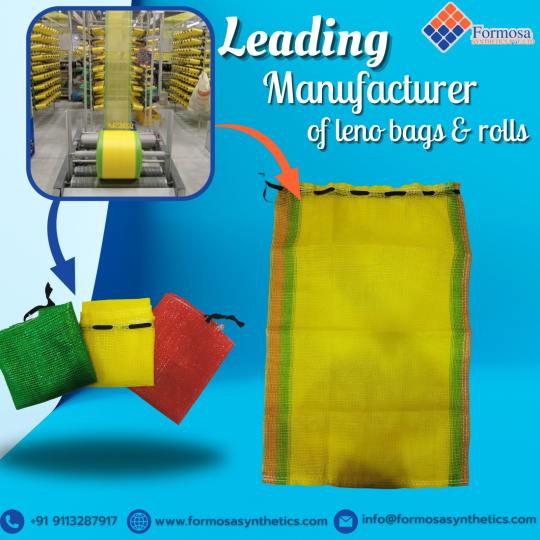
Introduction
In today’s competitive market, it’s crucial for businesses to understand what consumers want. One increasingly popular choice among environmentally conscious shoppers is PP Leno mesh bags. These bags are made from polypropylene and are seen as a more eco-friendly option compared to traditional plastic bags. They’re known for being durable, environmentally friendly, and versatile. As people become more aware of the impact of their purchases on the planet, they’re leaning towards products like PP Leno mesh bags that are better for the environment. By looking into why consumers prefer these bags, businesses can better meet their needs and show they care about sustainability.
Why Leno Mesh Bags Always Remain in Demand?
Leno mesh bags have maintained their popularity due to their exceptional design, functionality, and durability. Crafted with precision, each bag offers effortless usability, boasting remarkable strength to securely hold and transport bulk-weight goods. Their transparency allows for easy identification of contents, particularly advantageous for food storage, while their selected materials ensure longevity, even in prolonged use. Renowned for their resistance to environmental factors like moisture and haze, these bags remain a reliable choice for consumers prioritizing sustainability and practicality. As the demand for eco-friendly and efficient packaging solutions rises, Leno mesh bags continue to meet evolving needs across various industries, making them a staple choice for packaging and storage.
PP Leno Mesh Bags: Exploring the Benefits
These bags are crafted from polypropylene material, ensuring zero toxicity.
These bags are surprisingly lightweight, making them convenient to carry and transport.
PP Leno bags are renowned for their springiness.
Another key benefit of PP Leno mesh bags is their resistance to water.
Conclusion
In conclusion, the increasing popularity of PP Leno mesh bags highlights a significant shift in consumer preferences towards sustainability and eco-friendliness. Their durability, transparency, and resistance to environmental factors make them a practical choice for various applications, especially in packaging and storage. As businesses and consumers alike prioritize sustainable solutions, PP Leno mesh bags continue to meet these evolving demands, offering a viable alternative to single-use plastic bags. By embracing products like PP Leno mesh bags, individuals can contribute to reducing plastic waste and fostering a more environmentally conscious society for the future
Read More
#ConsumerPreferences#PPMeshBags#EcoFriendly#Sustainability#PackagingSolutions#EnvironmentallyConscious#PlasticWasteReduction#BusinessStrategy#MarketTrends#ConsumerBehavior#formosasynthetics
0 notes